|
By Graham K. Rogers
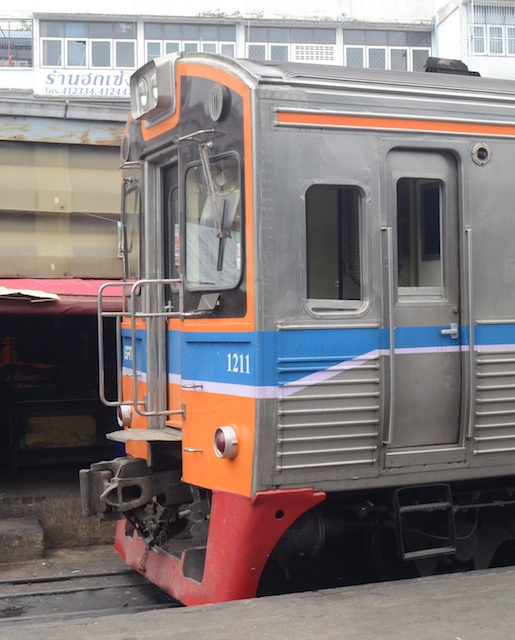
When I first noticed several years ago that there was a railway that started just near Wongwian Yai, I was intrigued. It was not connected to the main Thai Railway system and only seemed to go to the next province, Samut Sakhon. When I looked closer, I found there was a second part to this branch line, that began the other side of the Tha Chin River and went all the way to Mae Klong, Samut Songkhram, the river that comes from Kanchanaburi: one line, but in two parts.
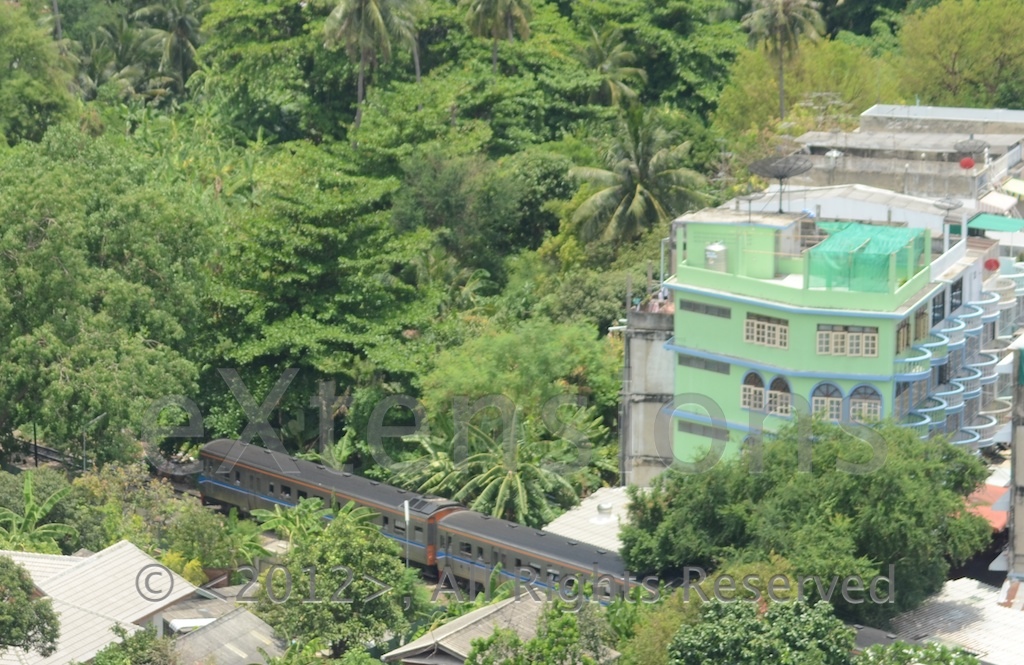
When I moved to this part of the Thonburi area of Bangkok -- the Other Bangkok -- the first section of the railway was a few hundred metres away. I would hear the trains -- inbound and outbound -- as they always sounded warnings due to the number of roads that are crossed and the closeness of houses bordering the tracks.
There seem to be at least two trains -- diesel multiple units -- that are used: one newer than the other. Older carriages are mixed in. Before I became used to the sounds, one of the trains would have me running for the iPhone as the first tone was almost the same as "Huntsman" that I use as the sound for text messages.
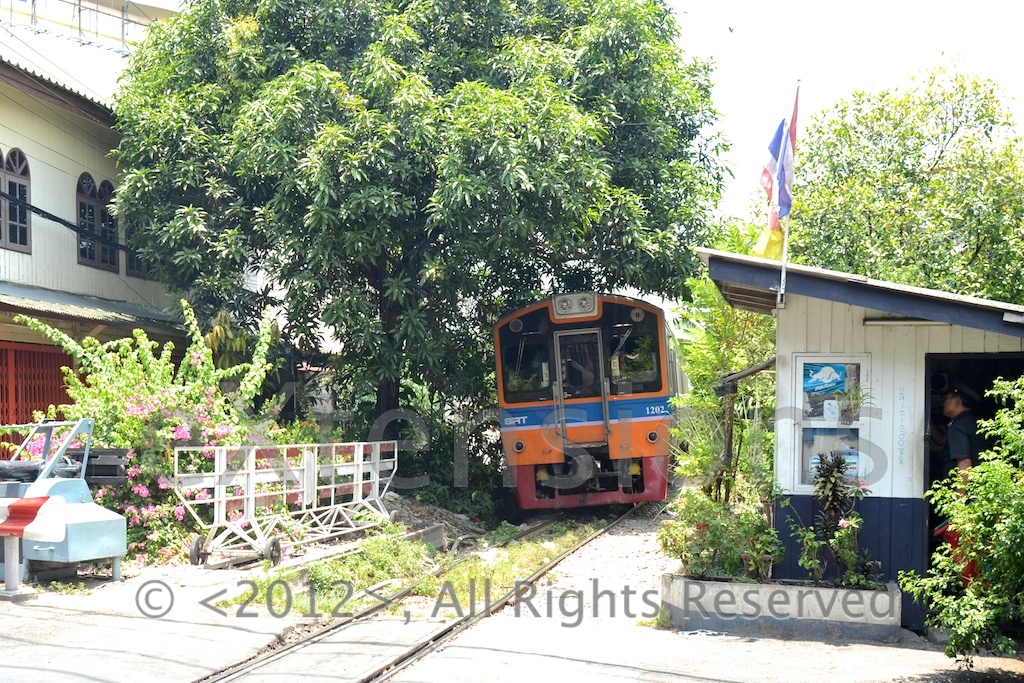
I took some early photographs of the level crossing near my apartment while I was testing the newly released (then) iPhone app for iOS devices. As part of that there is a Gallery feature and I loaded a number of images to iCloud.
With a few days spare, I took several series of photographs of the area around here, while also planning a trip on the railway. Far from being an isolated line, it is in full use -- very often packed -- and is clearly a major transportation artery for those coming into Bangkok from the nearby rural areas.
I had wondered (this being Thailand) as to the reasons for its existence. Was this some railway to nowhere that had spent millions of dollars of government (or aid grant) money? None of the above. This was good old fashioned capitalism: business needed the link. I found the clues as to the construction on an English language site of Thailand By Train which relates that,
Originally constructed as a private line to take sea produce from the fishing ports of Samut Sakhon and Samut Songkram to the markets of Bangkok, it later became part of the State Railway of Thailand, though it was never physically connected to the rest of the network.
There is little point me reinventing the wheel, so my task is to make the trip as best I can, take photographs and use anecdote rather than a detailed factual report.
As part of the planning (I am not an early morning person), I downloaded the English language timetables for both sections of the line (in PDF form) from the State Railway of Thailand. While the section from Wongwian Yai to Samut Sakhon has 17 trains each way a day, as shown on the timetable from the State Railway site, the section from Ban Laem to Mae Klong has only 4 trains a day in both directions.
The 10.44 am from Talad Phlu (10.40 from Wongwian Yai) was scheduled to arrive at 11.39, leaving me until 1330 to cross the river, have lunch and look around. Coming back, I would have an hour to play before getting the last train back that was scheduled to leave at 15:30. Plan B was to leave the second part for another day.
I decided on Plan B overnight, but had to invent Plan C when an early morning update to iOS for the iPhone went awry (the iPad was fine) and I had to restore. I heard the 10.44 train leaving Bangkok and the update was still not finished. The next train was 12:15 which would mean the second leg would have to be done another day. I had time to visit the bank and have a plate of noodles in a shophouse across from the station in plenty of time.
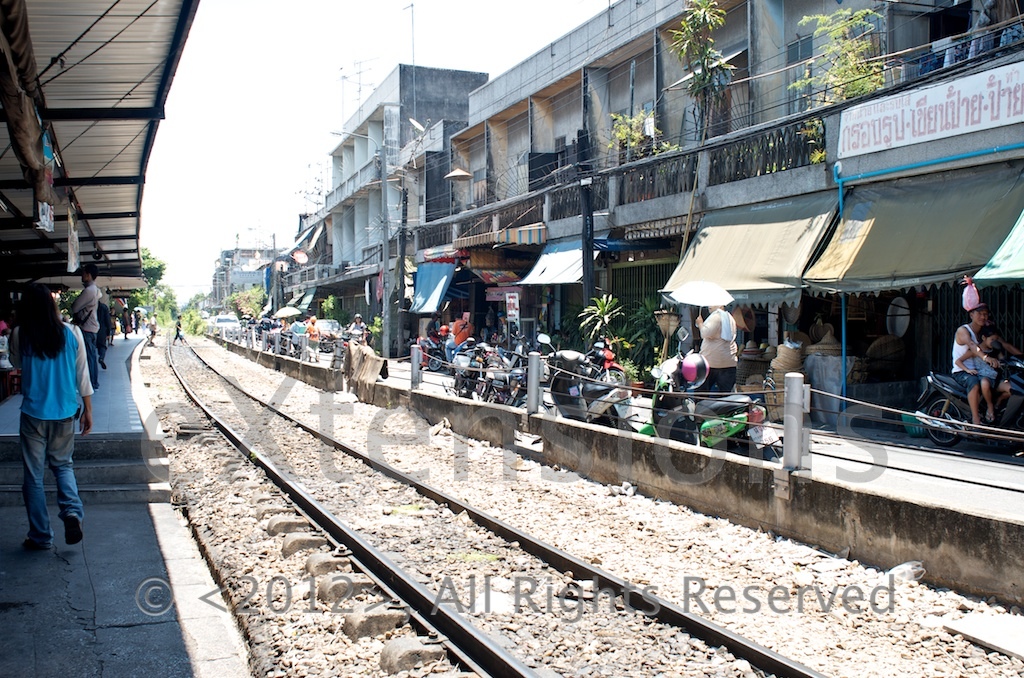
The fare to Mahachai was 10 baht which I joked was expensive when the clerk apologised that the train would be "hot" -- no air-conditioning. Not a problem I said (I wanted open windows for photographs).
Things have a funny way of turning out. As I entered the carriage, it was standing room only and I resigned myself to a trip down with limited photo opportunities apart from a few snapped through a small window nearby. The back of the last carriage had two sets of seats roped off for the railway staff with the driver compartments at the end (for when the train comes back).
Three or four stations out, a man with a white shirt got on, went to that rear section and through to the drivers' part, opening the centre rear door. The deference shown by the uniformed railway staff suggested he was management. I was right.
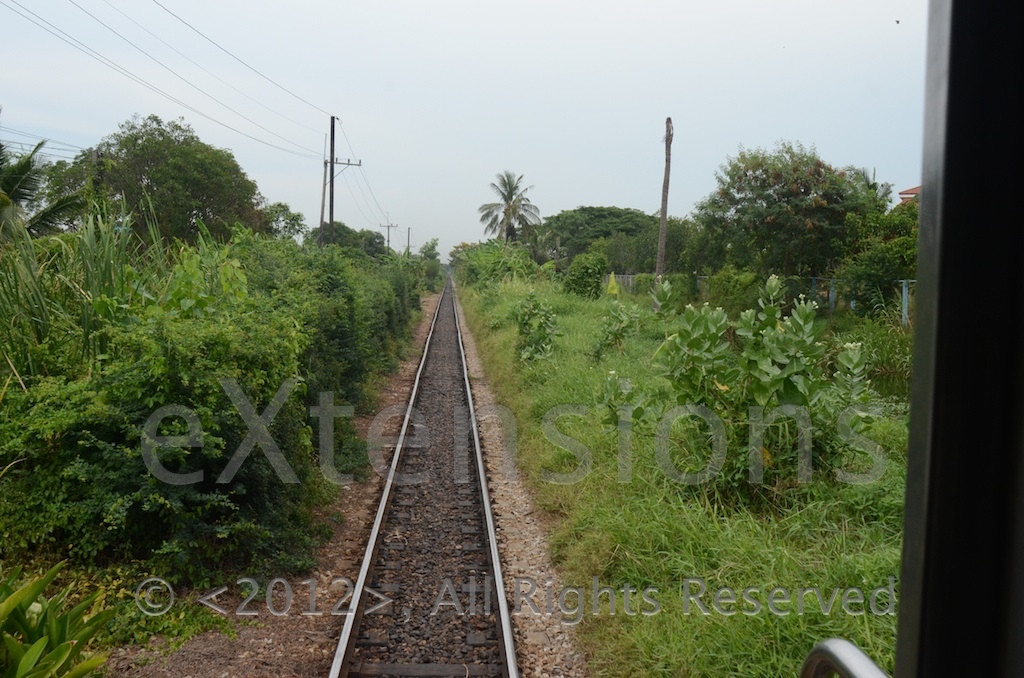
Near the Rama 2 road bridge, he caught my eye, pointed at the camera and indicated the rear of the train. What a chance. For a few kilometres I stood by the open door and photographed the view back up the track as well as what I could see to the sides (without putting myself at risk of falling out).
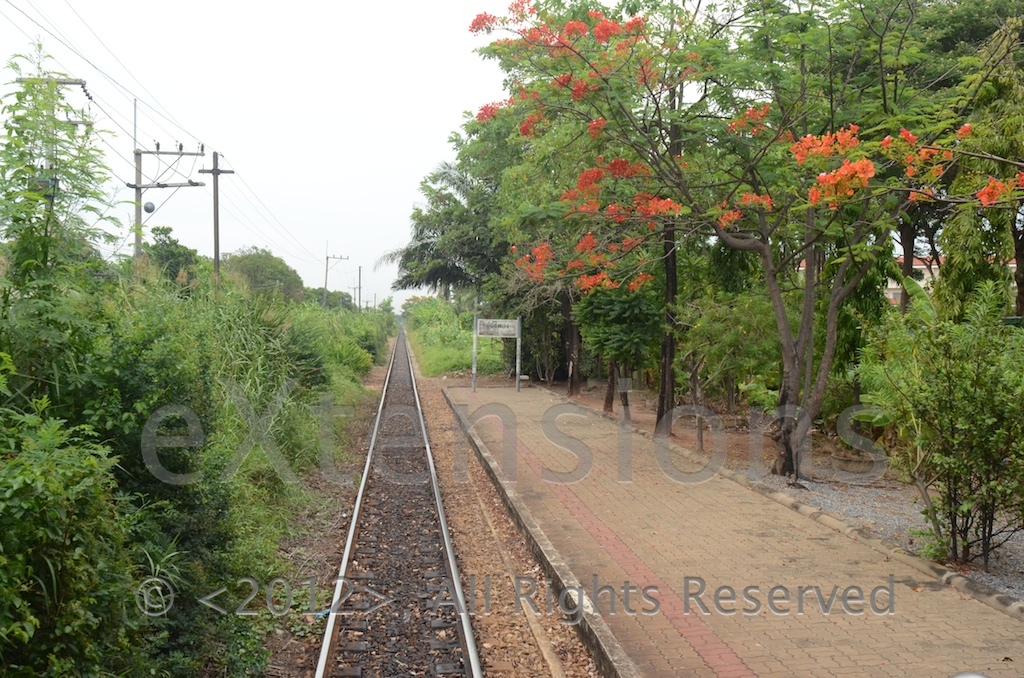
He was indeed management and described himself as "inspector" for the section of the line from Wongian Yai to Mahachai (Samut Sakhon). He confirmed that the line was originally to transport produce, especially fish, more quickly to Wongwian Yai. After a while he shut the door and let me sit in one of the driver's seats. Although I had a good view, the windows were a little spotted, so images used needed some cleaning up.
The side windows were open and I also managed a good selection of shots there. While I was there, I heard the train horn sounding several times and wondered what there was coming up in an area that looked quite rural. "Your foot", the manager said; "The button". While moving around trying to look out of the window, my foot had touched a large aluminium button on the floor: this was the horn. I apologised and moved my foot. He laughed.
Passing one section, he mentioned that there were a lot of monkeys in the area. Almost as soon as he had said it, he shouted, "Look" and pointed at one of them on top of a telegraph pole shaking it back and forth for all it was worth. With the speed of the train, the distance between us was increasing quickly but I did manage a shot but it is not as good as I would have liked.
Just before arriving at Mahachai he pointed out some of the old rolling stock on a parallel line. The train moved slowly through the area. Traffic is stopped at level crossings (but see below), however there are still people walking (and working) close to the track.
As we arrived at Mahachai, a train for Bangkok left from the other track. The whole station and market complex was packed out as was the market area nearby. I said my goodbyes to the manager who was being wai-ed left right and center and went towards the end of the platform to take some shots of the sheds where there were more trains.
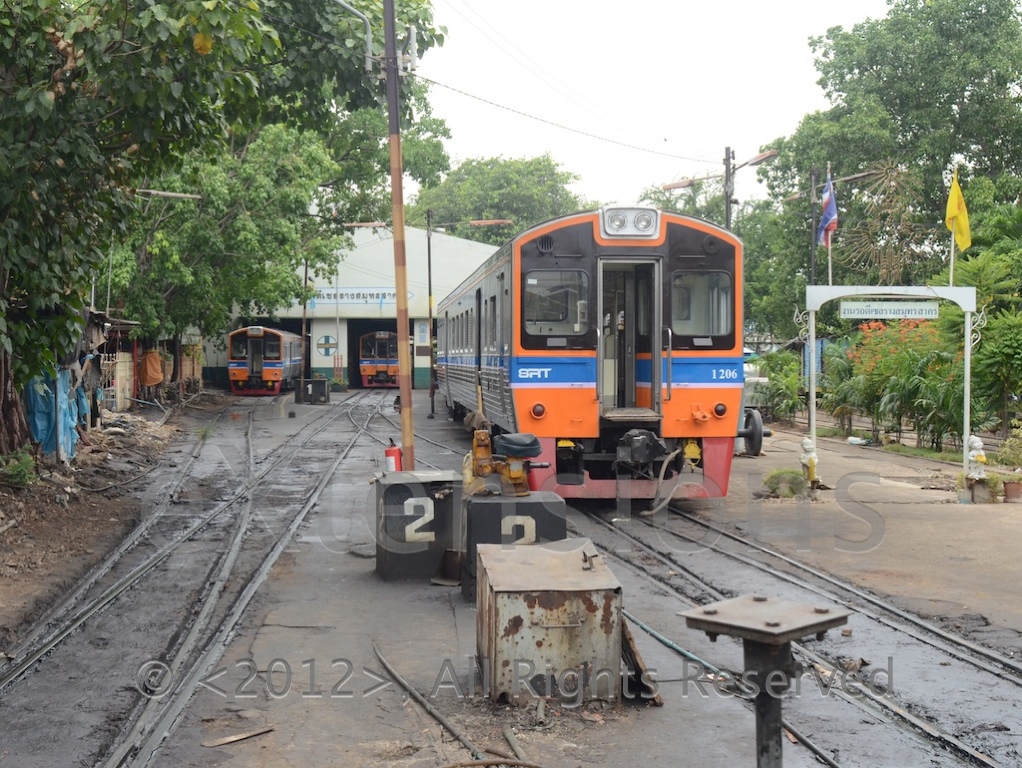
Leaving the station, I saw him disappearing up the stairs to his office and he gave me another wave as I left the compound and took some more pictures.
The street outside was vibrant. A lot of produce from the fishing industry was offered for sale -- fresh and dried -- as well as fruit. While it was busy, everyone was friendly.
I intended to spy out the area for the next part of the trip: the railway to Mae Klong. It was easy to find the river and the ferry was only a short walk from the station. There are several boats in use which take walking passengers, bicycles and motorcycles. I checked with the pleasant ticket seller and she confirmed this is the ferry to go to the other part of the railway.
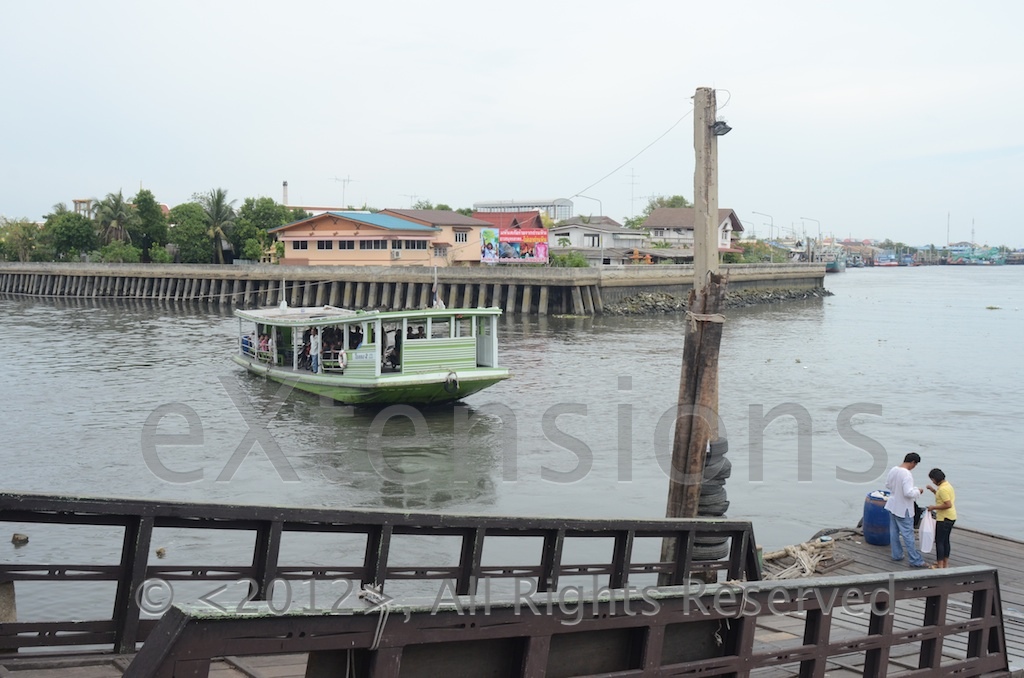
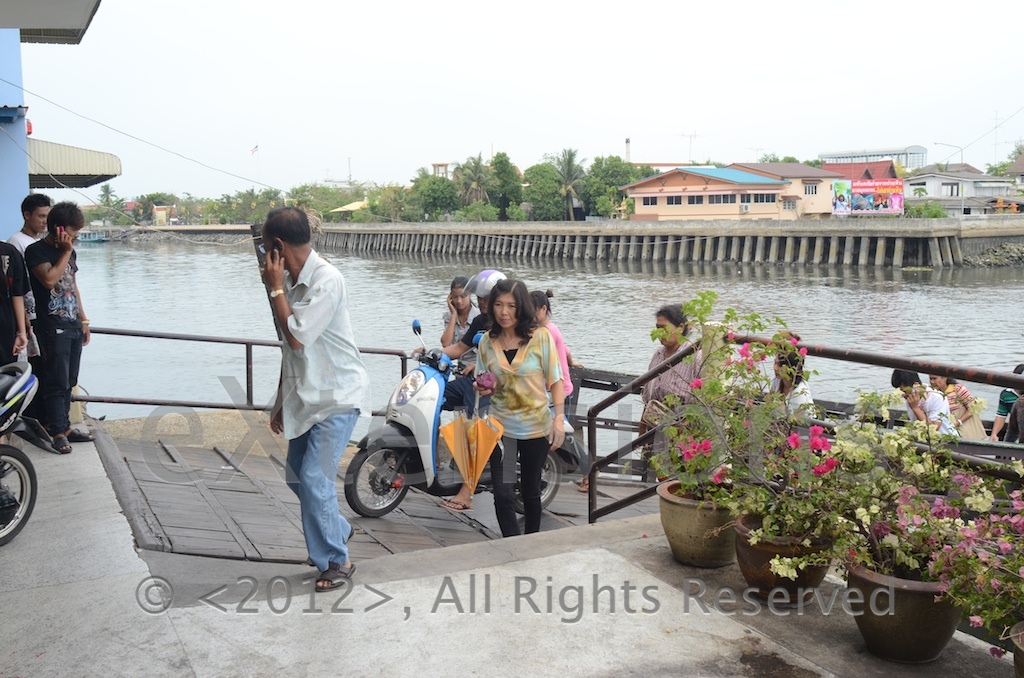
I spent a few minutes looking around the estuary area, which was far larger than I expected, as were the ocean-going ships moored there. I am sure that new trains would arrive at the railway by sea and the short trip from docks to sheds would be less difficult than any transportation work at the Bangkok end.
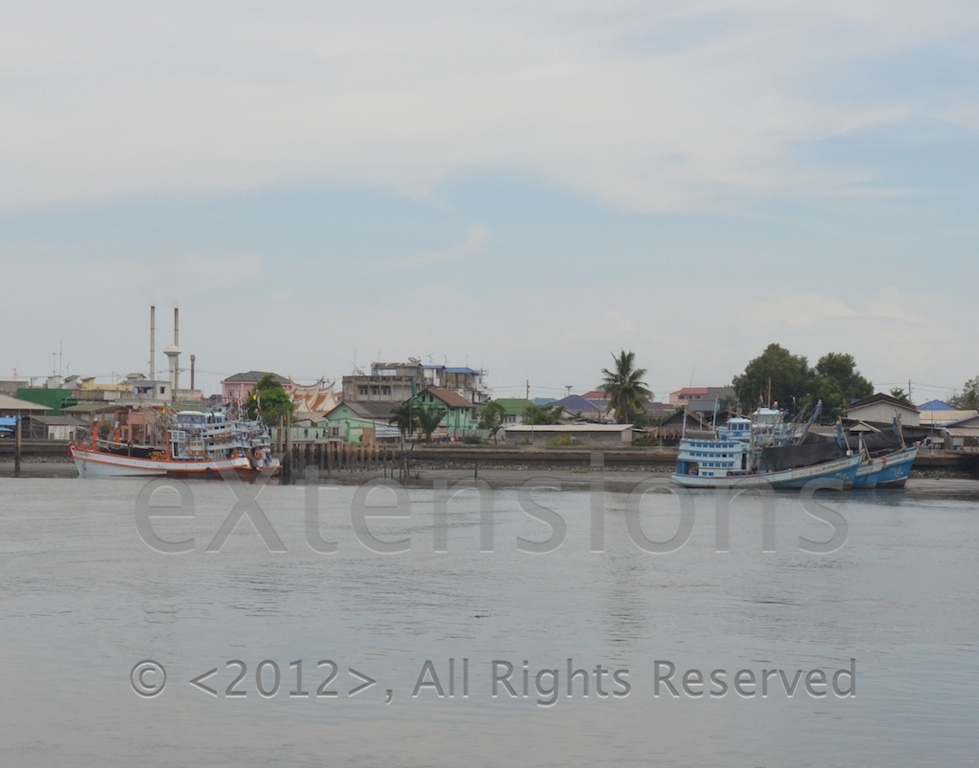
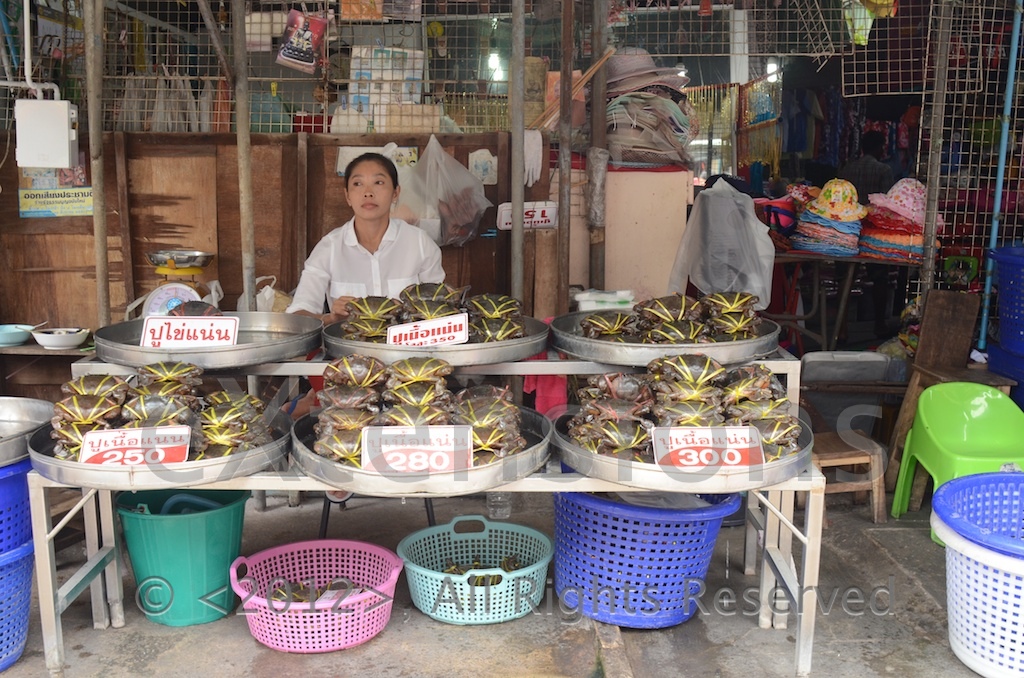
Once I had the information I wanted for a future trip, I headed back to the station where I tried to buy a ticket.
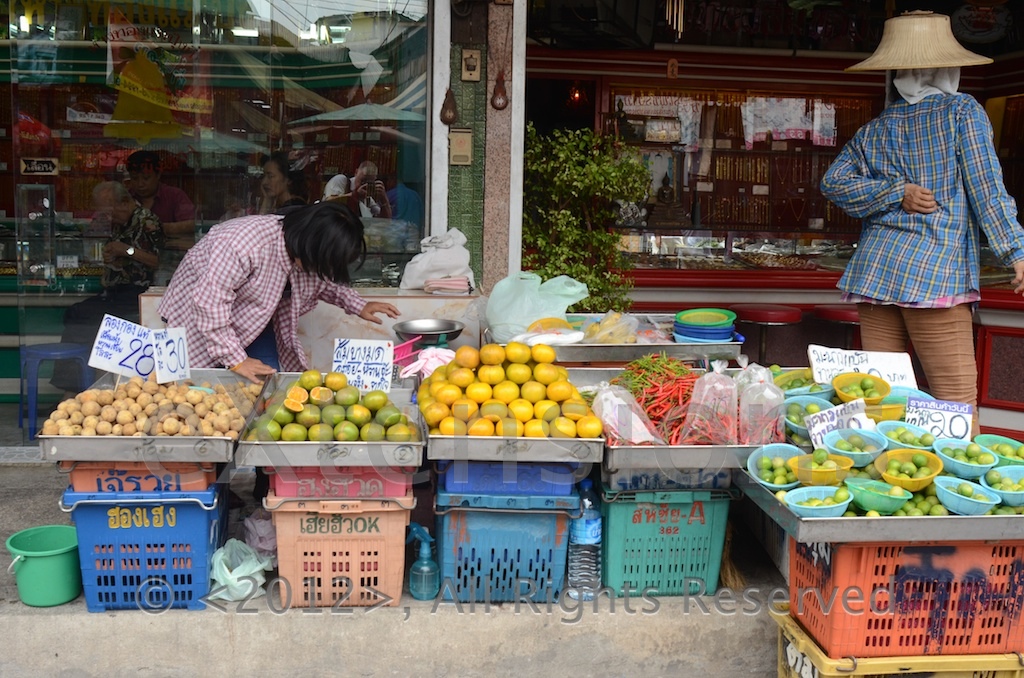
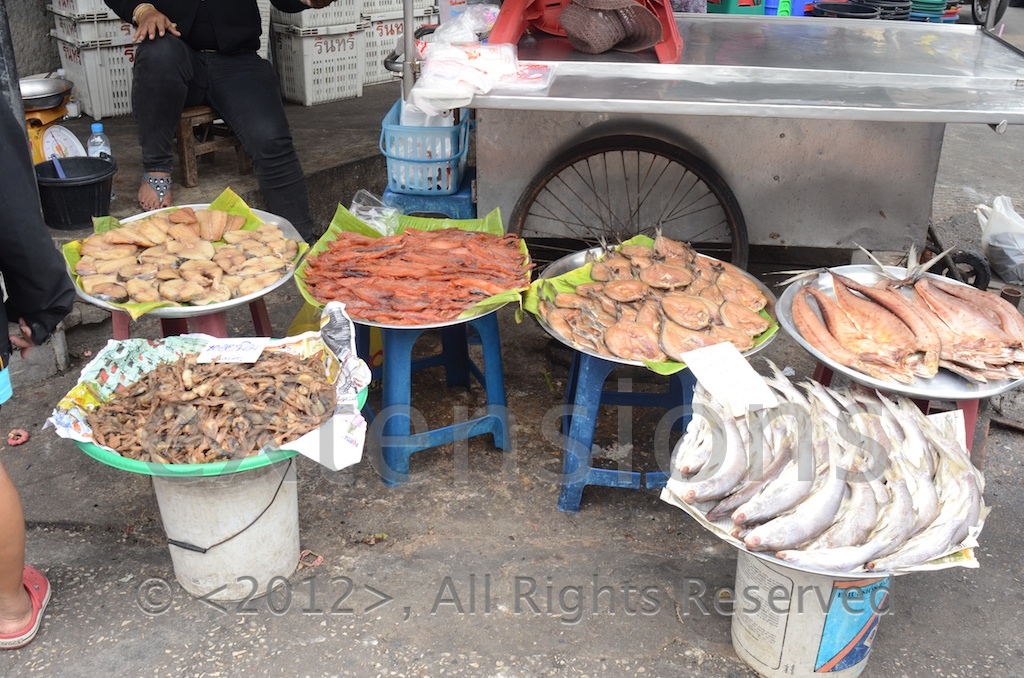
I was too early. A young lady working for the railway had spotted me and came downstairs while I was waiting to speak to a clerk and in reasonable English, asked what I wanted. She explained that the next train was not for 30 minutes and that the ticket office would open some 15 minutes before, at 2pm.
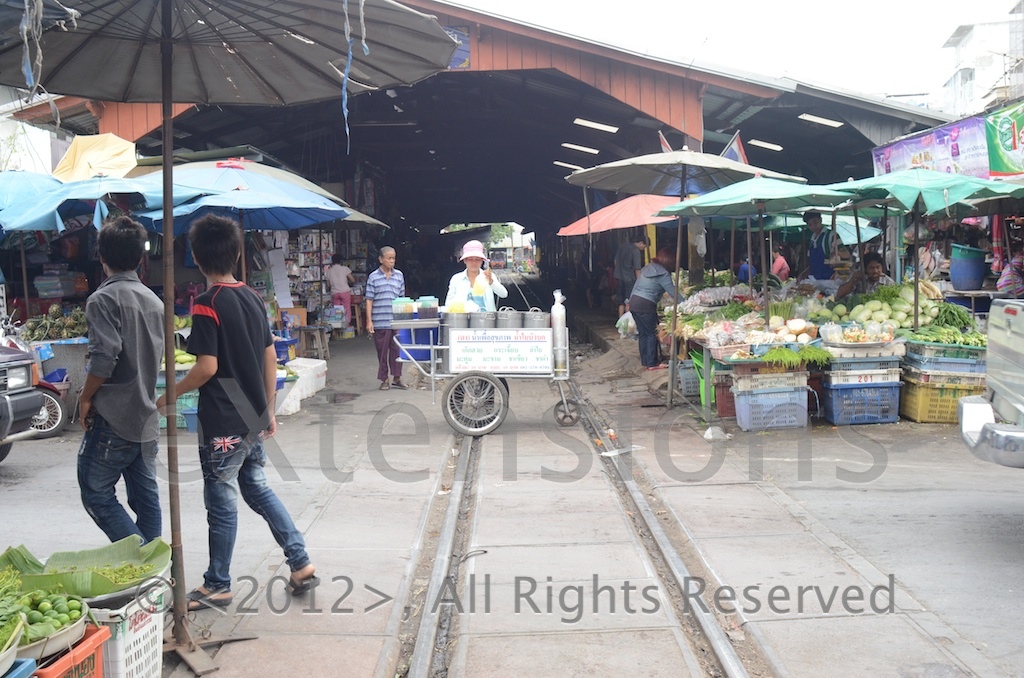
She gave me a nicely printed timetable for both sections of the Wongwian Yai railway (and some other Bangkok suburban services). Later when I came back and had bought the ticket -- each one printed out on a dot-matrix printer -- she checked again to make sure I was all right.
With a wait of some 20 minutes, I had a wander into the sheds area and took some more photographs. Back at the platform, like a lot of other people, I got onto the wrong train. The one waiting (the same one I had arrived on) was not going to be used. When the train arrived from Wongwian Yai, that would make the return journey with a few minutes turn-round time.
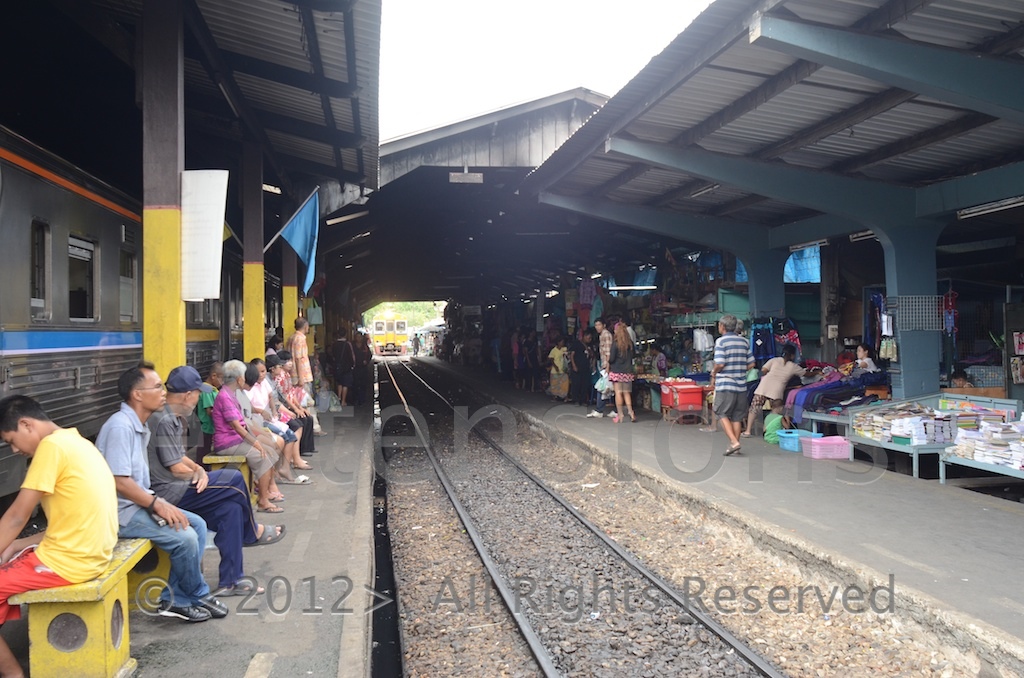
The trip back was easier and I did have a windows seat: the whole 4-seat section was free for most of the journey. About 15 minutes out of Mahachai, the train braked heavily and came to a stop with the engines racing. The other passengers indicated this was out of the ordinary and everyone looked out of the windows. While some level crossings are controlled by gates and staff waving flags, many are open. Access to a new building site to the side of the track had no gates and it looked as if a truck driver had come closer to crossing than the train driver was happy with so had taken the safe action. It was nice to know that the train drivers were aware enough to do this.
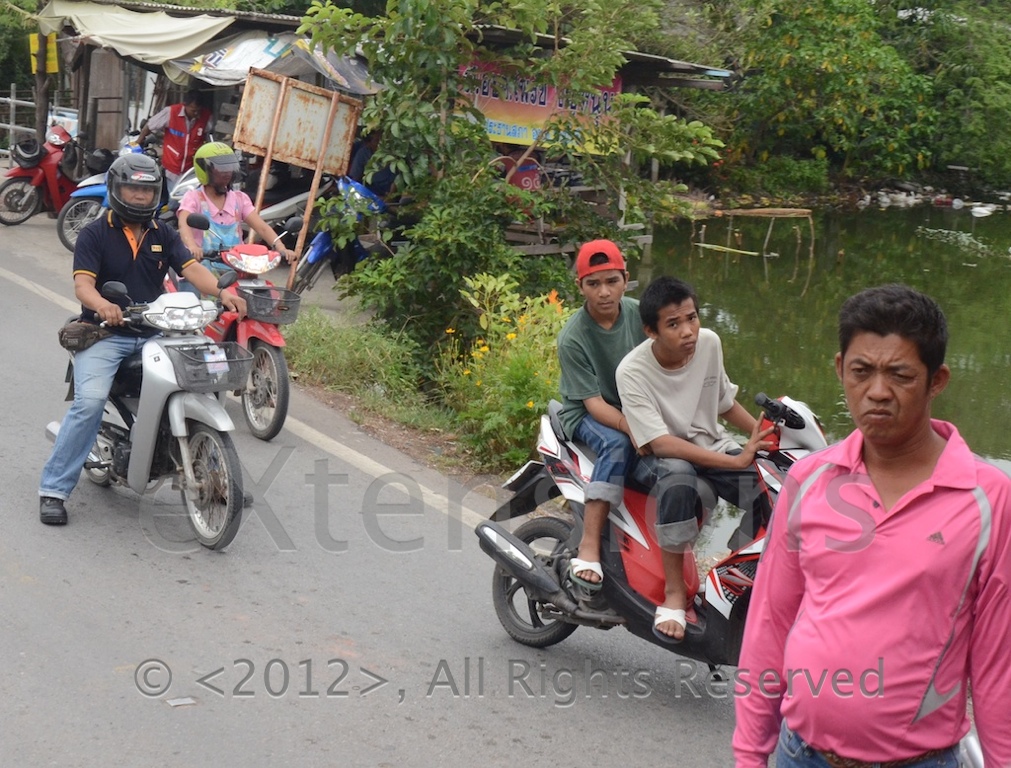
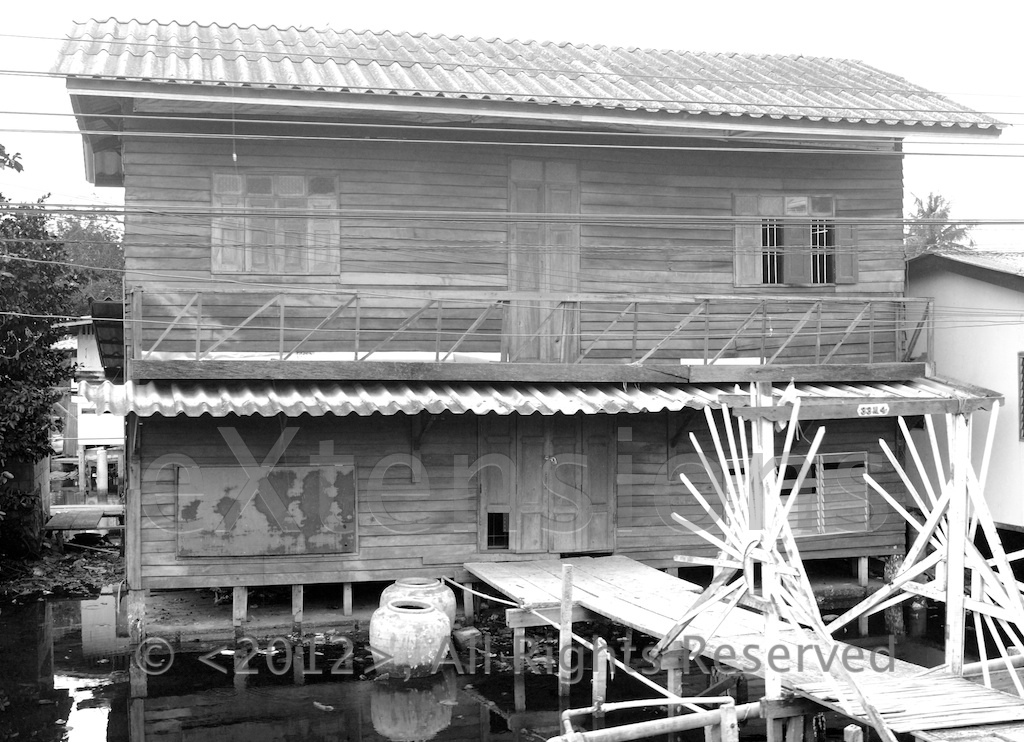
As I had seen on the journey out, not only were walls, houses, factories, schools and temples built close to the tracks, but the vegetation was also right up to the side of the permanent way.
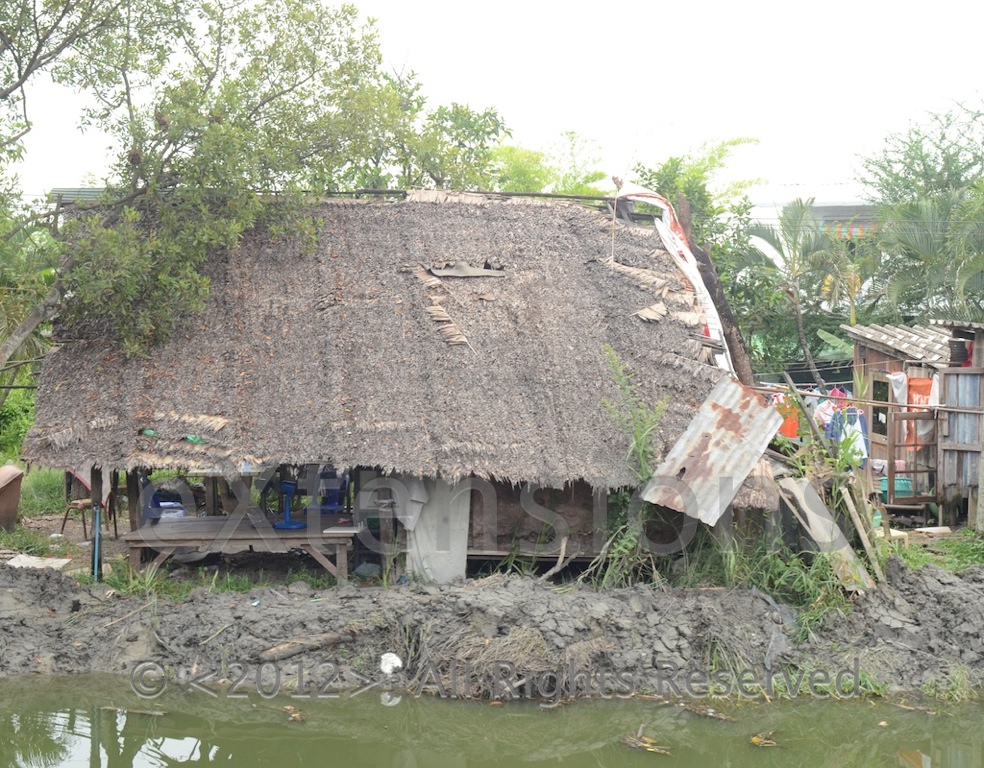
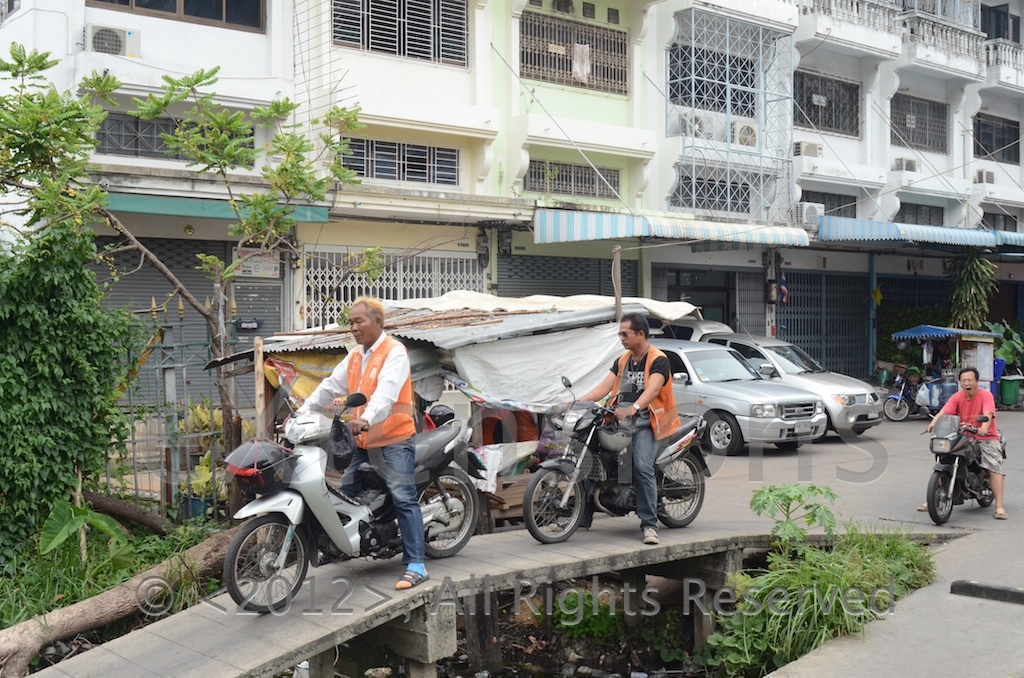
At one stage my face was struck (lightly) by reeds that were coming in the windows. With the speed of the train and the closeness of buildings and nature, it was not as easy for taking photographs as it is on a Bangkok bus. I was limited by what I could see, but often when I did see something it was already past.
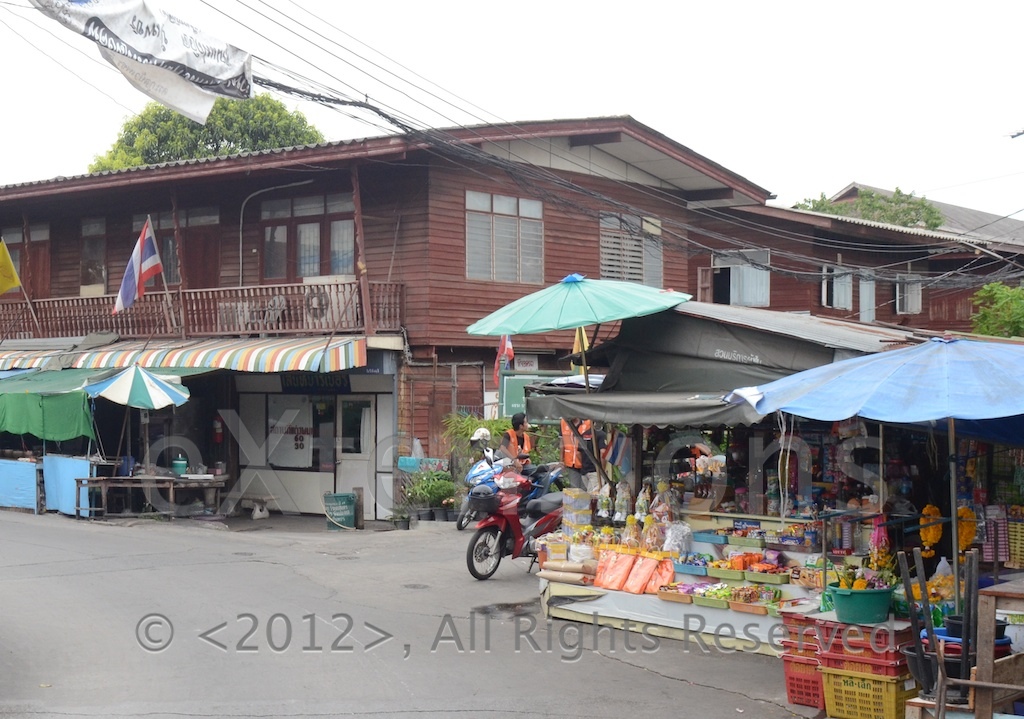
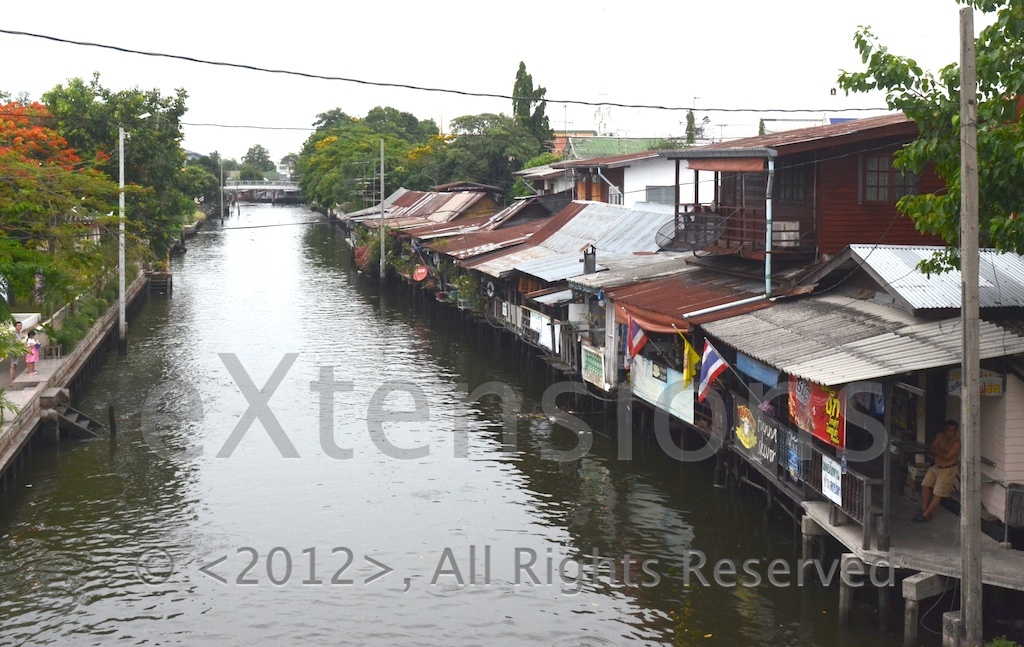
While the watermarking reduces the overall quality of the photographs, I am aware that my pictures sometimes end up on sites without no acknowledgement. I have the originals of course. These are available if wanted. I have selected 40 images from more than 250 taken. I have also added a couple of images from other articles.
For those with a Mac and a trackpad, use Safari in Full Screen View and use two fingers to tap on the trackpad for a better display of the pictures. Please share the links.
Graham K. Rogers
Thonburi
8 May 2012
For other photographic essays of local interest, please also have a look at
See also: A Railway to Nowhere (2): Ban Laem to Mae Klong - Chalk and Cheese
Graham K. Rogers teaches at the Faculty of Engineering, Mahidol University in Thailand. He wrote in the Bangkok Post, Database supplement on IT subjects. For the last seven years of Database he wrote a column on Apple and Macs.
|
























